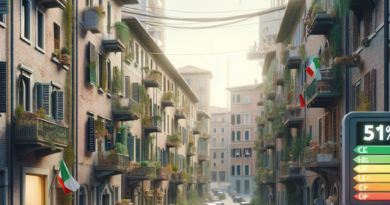When Italians Stopped Saving: An Insight into Economic Trends
Italian Savings Trends
Italians save money to feel more secure in their daily lives, to build a peaceful retirement, or to provide resources for their children and grandchildren.
Often, they do so through government bonds, showing a clear preference for national financial instruments.
However, not everyone has the possibility to save: many can only set aside minimal fractions of their income, while almost one in four Italians cannot save at all.
According to the latest Censis-Assogestioni report, only 77% of Italians claim to be able to save, with quite diversified results.
Among savers, over 39% manage to save at most 5% of their annual income.
33% save between 6% and 15% of their earnings, 17% set aside up to one-fifth of their annual income, while just over one in ten Italian savers can save over 20% of their income.
Saving the minimum is better than nothing, considering that 13 million Italians, 23% of the population, are simply unable to do so.
On the other hand, OECD data also confirms the low saving capacity of Italian families, which, as of the latest update in 2022, shows one of the lowest values in Europe and is significantly lower compared to other major economies such as France and Germany.
Furthermore, Istat certifies the decrease in the propensity to save with the publication of the “National Economic Accounts by Institutional Sector.” In 2023, the disposable income of families increased by 4.7% compared to 2022, although price growth reduced purchasing power by 0.5%, that is, the income in real terms.
As a result, to cope with daily expenses, Italians’ propensity to save is decreasing year by year, reaching the lowest levels since 1995 in 2023, the first year of reference for this type of survey.
Last year, the Italian saving rate, i.e., households’ savings as a percentage of their disposable income, dropped to 6.3%, down from 7.8% in 2022.
In 2020, the Italian saving rate had reached 15.6%, driven by a consumption collapse and stimulated by the uncertainty about the future generated by the pandemic.
In just two to three years, the Italian saving rate has halved.
Even though the 2020 value was particularly high, it was not the highest recorded in the last thirty years: in 1996, the saving rate of Italian families had exceeded 19%.
Recently, Antonio Patuelli, the president of ABI, the Italian Banking Association, stated that Italian savers bear “heavy taxation that often leads them to invest abroad,” hoping for a reduction.
According to Patuelli, today “savers investing in the medium and long term face a taxation of almost 60% of the gross income produced by banks: corporate income tax, the 3.5% surcharge, local taxes, the flat tax on dividends, regional production tax, property taxes, and stamp duty all add up.”
Read also: Your Home is at Risk.
Here’s Why




